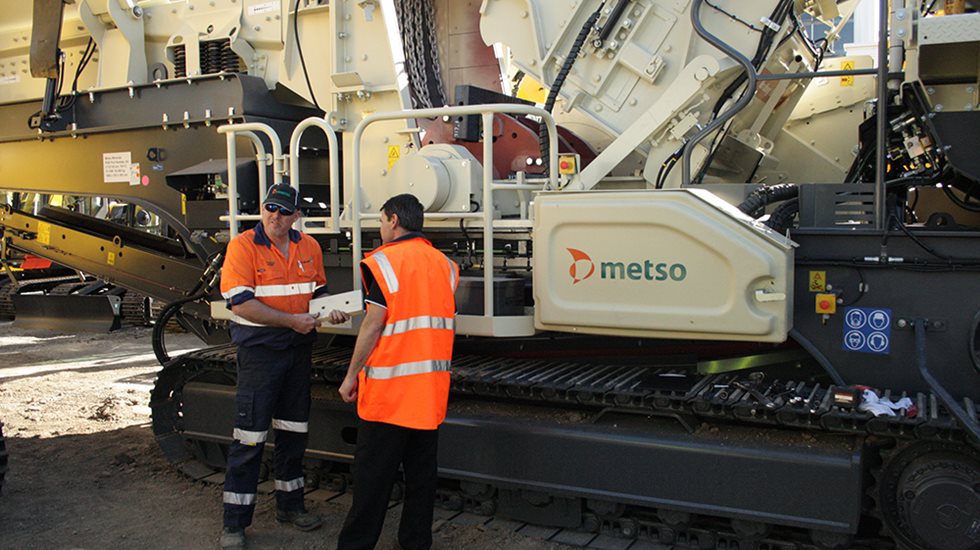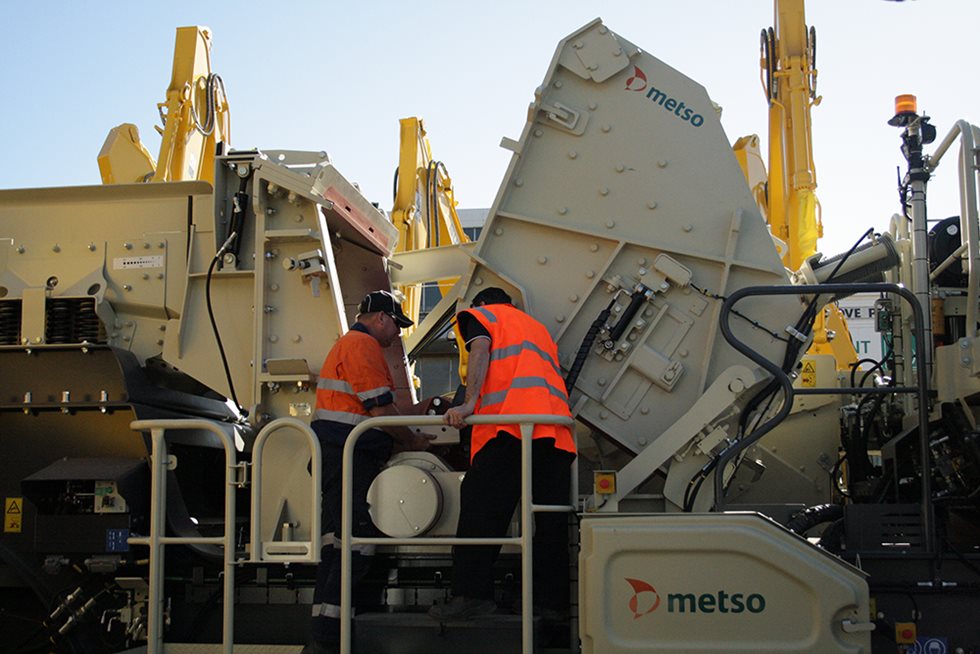Comprised of a cloud-based, remote monitoring and data visualization service for Metso Outotec Lokotrack® mobile plants, Metso Outotec Metrics is a remote monitoring tool that helps contractors and quarry operators gain critical insight into fleet performance and maintenance. With over 1,200 machines globally connected to Metso Outotec Metrics, the remote monitoring solution has seen increased adoption in the current global context where physically traveling to on-site machine inspections is more challenging.
We caught up with Metso Outotec’s exclusive equipment distributor in Australia, Tutt Bryant Equipment, to learn more about how their service team and customers benefit from fleet monitoring technology. Martyn Driscoll, National Technical Service Manager, and Paul Doran, Business Development Manager, both shed light on Metso Metrics and how the aggregates industry as a whole is moving towards digitalization.
Metso Outotec (MO): Tutt Bryant Equipment was an early advocate for Metso Outotec Metrics. Can you talk us through your usual installation process?
Martyn Driscoll (MD): I make sure all post-2016 machines are all connected to Metrics. Whether the customer is going to use the technology or not, we can monitor what’s going on and help them out. There’s obviously value there for the customer, but for us as their distributor to be able to monitor processes, alarms and parameter changes, it’s really useful.
MO: If you look at Metrics as a whole, what do you see as its core value?
Paul Doran (PD): The access to information—you can’t get that level of detail from any other fleet management system… It helps customers with their planning, having access to detailed information on the availability and serviceability of their machines.
MD: To add something here, I actually have some customers that I figure must sit there looking at Metrics all day long, every day in their office. They sometimes ring me before I even know there’s something wrong!
MO: From your perspective as a distributor, how are you using Metrics?
MD: We use it for alarms. If I have a customer that calls to say their machine just stopped, we can log in to Metrics and see the alarms for the past half hour, or whatever it might be, and you can then walk through—have you checked this, have you checked that? If the customer changed any parameters, we’ll see that via Metrics, too. It could be the case where they’ve changed a parameter and didn’t know what they were changing, so we can walk through how to change it back and get the machine operating for their needs again.
PD: The main purpose for me is to demonstrate the monitoring of fuel and utilization of machines. I can pull up the performance of a certain machine—how many hours it’s been crushing, how much fuel is used. A big plus of Metrics is the fuel usage for a large crusher, it’s unparalleled.

